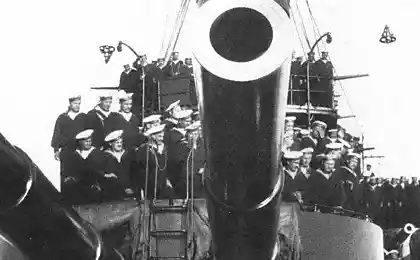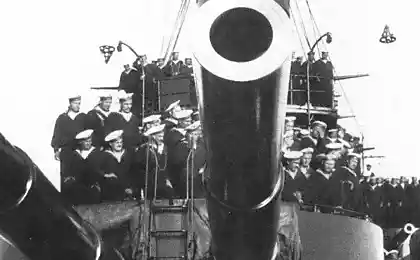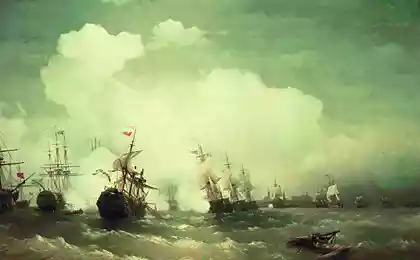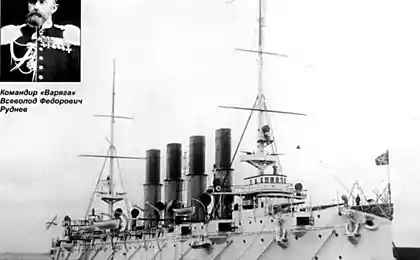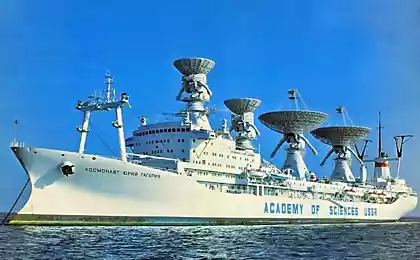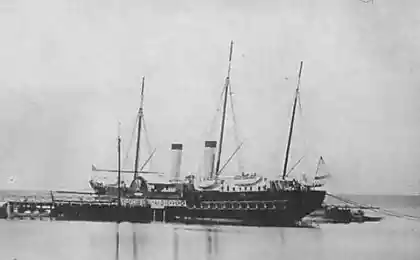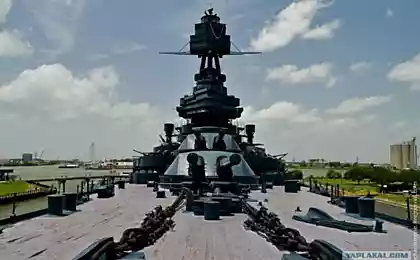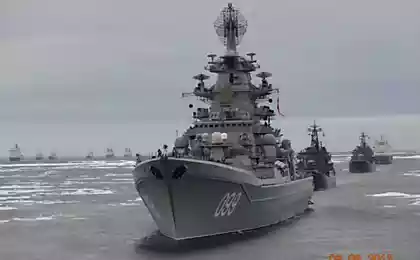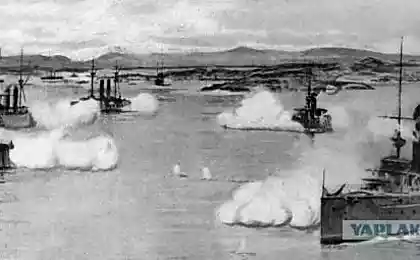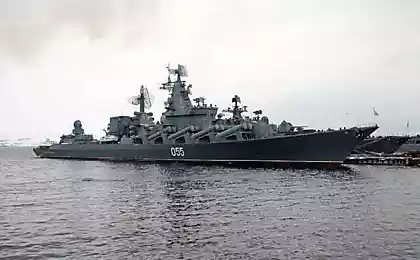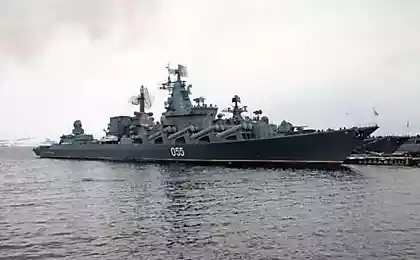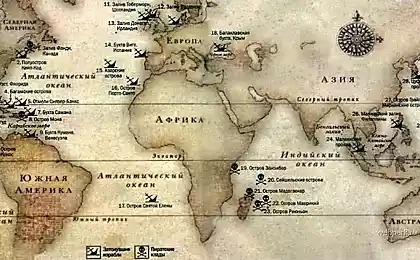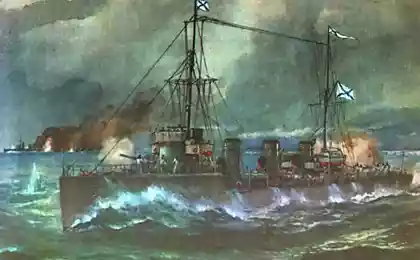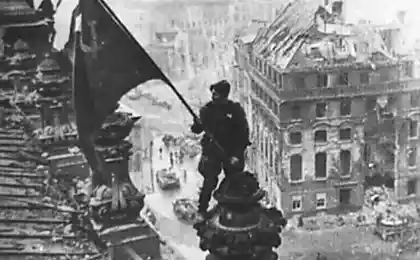899
Round Russian ships Admiral (11 photos)
Even in 1863, the Maritime Ministry raised the issue of the construction of the south-bound Russian armor rafts floating battery and monitors to protect the entrance to the Sea of Azov and the Dnieper-Bug estuary. But then for political reasons and because of the lack of shipbuilding base in the south of this idea was abandoned. Again, back to the subject only in 1869. Special meeting of officials of the military and naval departments and the Ministry of Finance concluded the need for urgent construction of the southern Russian armored vehicles for the protection of the Black Sea coast.
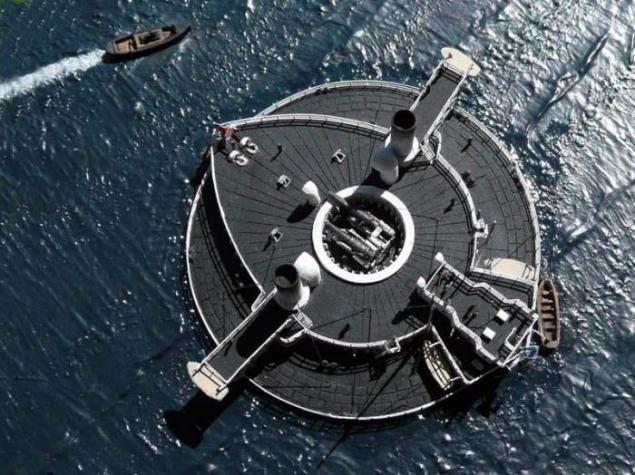
This War Department has set three conditions that had to meet these ships:
on terrain conditions they should not sit deeply 12 or 14 feet (3, 7-4, 3 m);
You should have thicker armor than the then existing foreign battleships;
should be the highest caliber of serfs guns, that is not less than 11 - inch steel rifled guns.
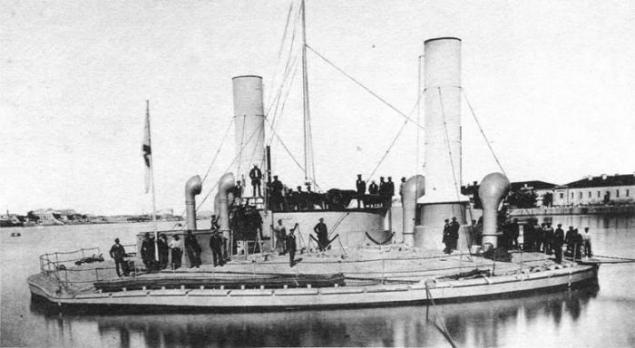
All these conditions were considered the shipbuilding department of the Naval Technical Committee. But none of the then existing type of armored vessels as the Russian Navy and foreign fleets do not meet these conditions: a major artillery and strong reservations could only be installed on ships large and rainfall. Out of this difficult situation given the project of His Majesty's suite of Rear Admiral AA Popov, who proposed the construction of circular courts. This form enabled the vessel at a very low sediment borne by the thick armor and artillery shells of the largest caliber, it was unthinkable for the ships existing structures. Some authorities Marine Science expressed doubts about the seaworthiness of battleships such an unusual shape. They believed that "Popovka" (a name of the court received an official) will be bad to keep on a rampage, lurching and possess in their interior spaces are not good ventilation. To dismiss these objections, decided to experiment with round boats diameter of 3, 7, and 7, 3 m. When experiments with round boats dispelled all doubts, October 12, 1870 followed by a royal command to build armored ships of the type "popovok" for the defense of the Kerch Strait Dnieper-Bug-sky estuary.
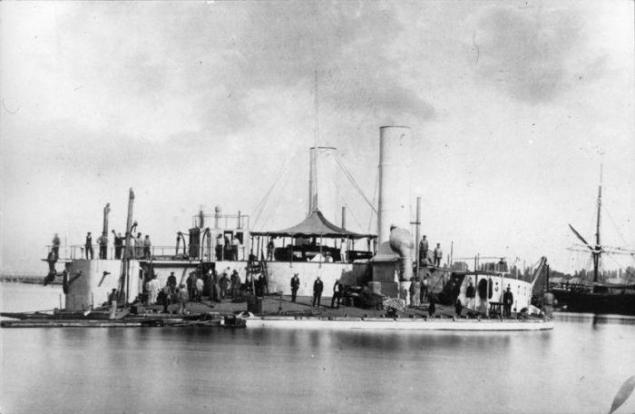
Almost simultaneously with the construction of the highest command "popovok" followed by the formal repeal of certain articles of the Treaty of Paris, forbade military shipbuilding in the Black Sea. In this regard, the Ministry of the Navy immediately raised the question: should the first time to limit the construction of "popovok" or immediately start the construction of the already traditional armored fleet. We stopped at "Popovka". Too weak shipbuilding framework does not allow you to implement a large program.
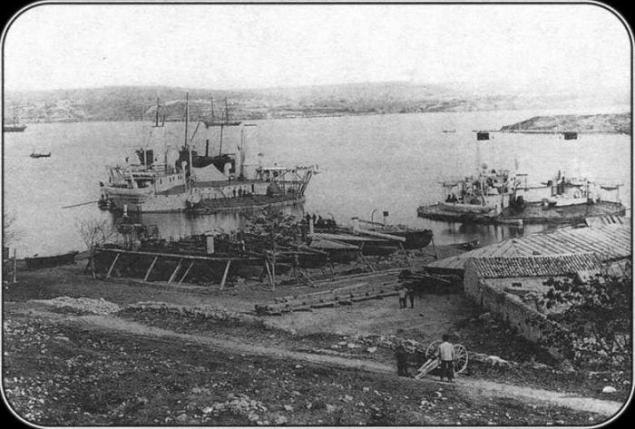
Critics, or rather envious of Fame Popov, accused shipbuilder Naval Ministry in wasted money. They seem to have forgotten what these ships were provided, and would like to see them seaworthy armadillos. They were built as plavbatarei and it is fit for purpose. We refer to the review the Chief of the Maritime Defense of Odessa Rear Admiral Chikhacheva which II in August 1877, wrote: "On the basis of the conclusions of the special commission, as well as on the personal my acquaintance with the properties of" popovok "during their stay in Odessa and swimming under my flag Ochakov on 25 June and then to the Chilia arm of the Danube on July 27-29, and finally during the cruise to the Romanian border 5 and 6 August 1877, I fully recognize the huge defensive force "popovok", especially in places like Odessa, where the defensive line is stretched over a long distance, and their huge guns can conveniently be transferred from one flank to the other to support the attacked cells ... Watchful waiting is the "popovok" they occupy so far can not be called inaction as "Popovka" just do not have the opportunity act. " So to build a "Popovka" knowingly. Defense requirements shallow Kerch Strait and the Dnieper-Bug estuary they are completely satisfied.
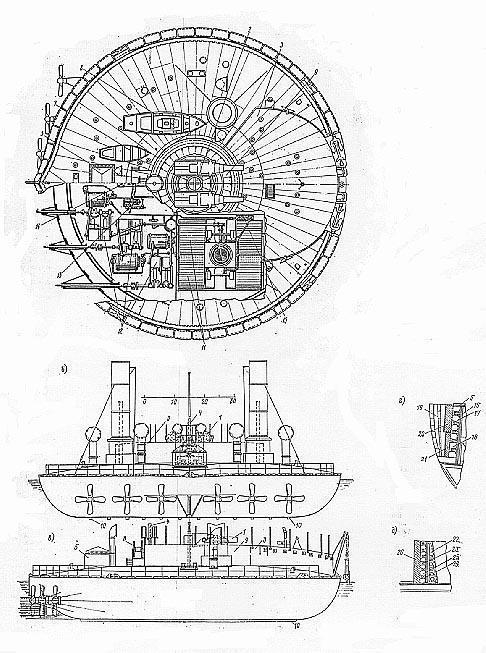
Along with positive qualities, "Popovka" had significant shortcomings and therefore not taken root in the Navy, but we must not forget that they were the first on the Black Sea battleships and with them the revival of the fleet in the south.
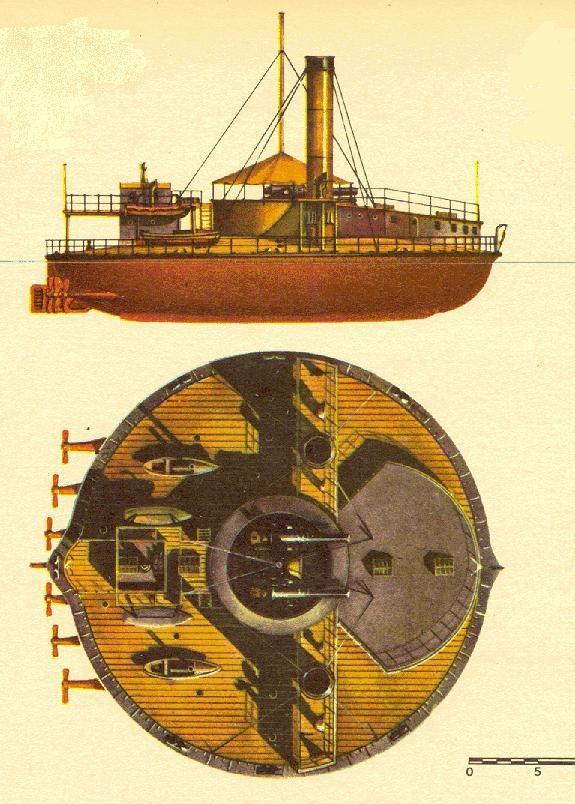
Both ship in 1892 have been reclassified in the coastal defense battleships, served until 1903, then they were transferred Nikolaev port for extended storage and finally expelled from the Navy list "of totally unsuitable for further service." Cases of these ships went for scrapping almost a decade.
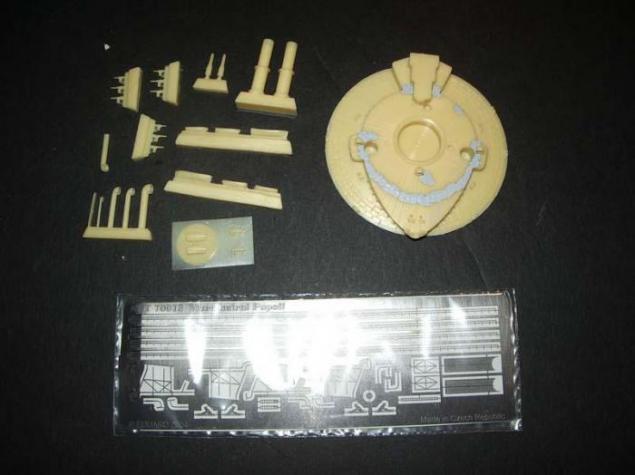
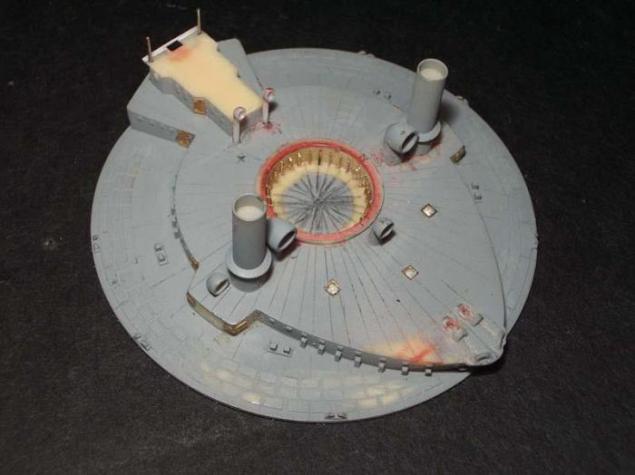
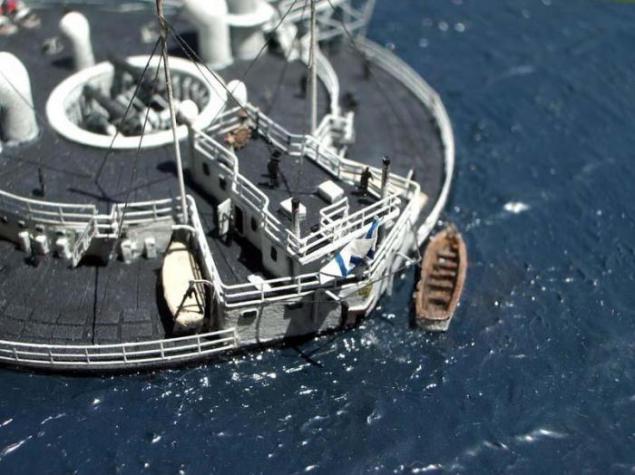
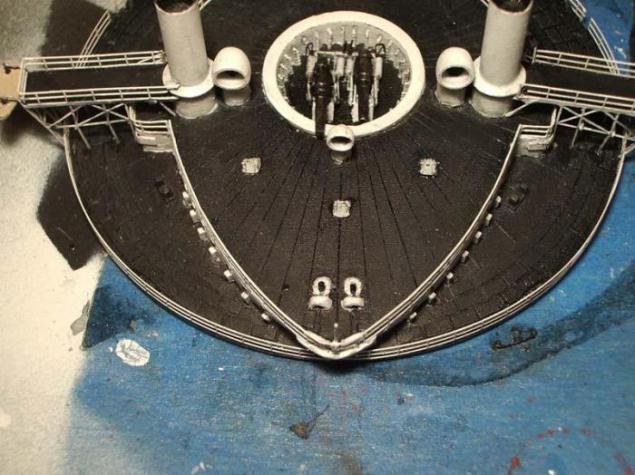
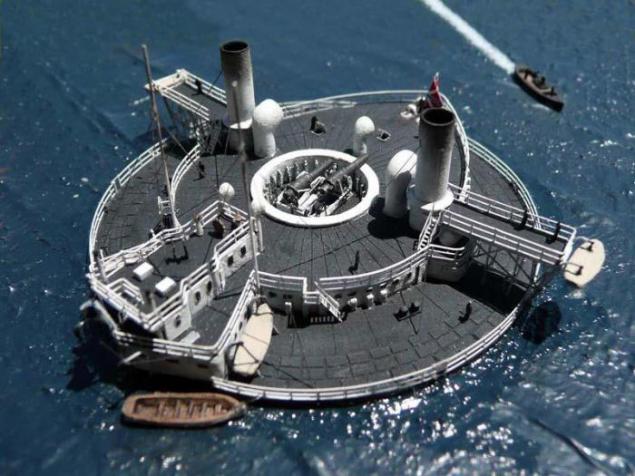

This War Department has set three conditions that had to meet these ships:
on terrain conditions they should not sit deeply 12 or 14 feet (3, 7-4, 3 m);
You should have thicker armor than the then existing foreign battleships;
should be the highest caliber of serfs guns, that is not less than 11 - inch steel rifled guns.

All these conditions were considered the shipbuilding department of the Naval Technical Committee. But none of the then existing type of armored vessels as the Russian Navy and foreign fleets do not meet these conditions: a major artillery and strong reservations could only be installed on ships large and rainfall. Out of this difficult situation given the project of His Majesty's suite of Rear Admiral AA Popov, who proposed the construction of circular courts. This form enabled the vessel at a very low sediment borne by the thick armor and artillery shells of the largest caliber, it was unthinkable for the ships existing structures. Some authorities Marine Science expressed doubts about the seaworthiness of battleships such an unusual shape. They believed that "Popovka" (a name of the court received an official) will be bad to keep on a rampage, lurching and possess in their interior spaces are not good ventilation. To dismiss these objections, decided to experiment with round boats diameter of 3, 7, and 7, 3 m. When experiments with round boats dispelled all doubts, October 12, 1870 followed by a royal command to build armored ships of the type "popovok" for the defense of the Kerch Strait Dnieper-Bug-sky estuary.

Almost simultaneously with the construction of the highest command "popovok" followed by the formal repeal of certain articles of the Treaty of Paris, forbade military shipbuilding in the Black Sea. In this regard, the Ministry of the Navy immediately raised the question: should the first time to limit the construction of "popovok" or immediately start the construction of the already traditional armored fleet. We stopped at "Popovka". Too weak shipbuilding framework does not allow you to implement a large program.

Critics, or rather envious of Fame Popov, accused shipbuilder Naval Ministry in wasted money. They seem to have forgotten what these ships were provided, and would like to see them seaworthy armadillos. They were built as plavbatarei and it is fit for purpose. We refer to the review the Chief of the Maritime Defense of Odessa Rear Admiral Chikhacheva which II in August 1877, wrote: "On the basis of the conclusions of the special commission, as well as on the personal my acquaintance with the properties of" popovok "during their stay in Odessa and swimming under my flag Ochakov on 25 June and then to the Chilia arm of the Danube on July 27-29, and finally during the cruise to the Romanian border 5 and 6 August 1877, I fully recognize the huge defensive force "popovok", especially in places like Odessa, where the defensive line is stretched over a long distance, and their huge guns can conveniently be transferred from one flank to the other to support the attacked cells ... Watchful waiting is the "popovok" they occupy so far can not be called inaction as "Popovka" just do not have the opportunity act. " So to build a "Popovka" knowingly. Defense requirements shallow Kerch Strait and the Dnieper-Bug estuary they are completely satisfied.

Along with positive qualities, "Popovka" had significant shortcomings and therefore not taken root in the Navy, but we must not forget that they were the first on the Black Sea battleships and with them the revival of the fleet in the south.

Both ship in 1892 have been reclassified in the coastal defense battleships, served until 1903, then they were transferred Nikolaev port for extended storage and finally expelled from the Navy list "of totally unsuitable for further service." Cases of these ships went for scrapping almost a decade.





